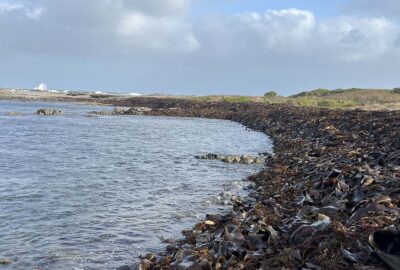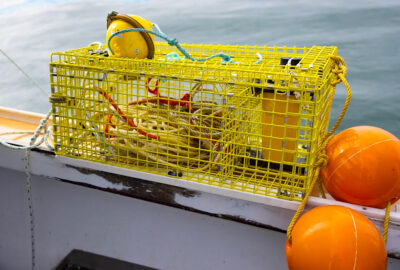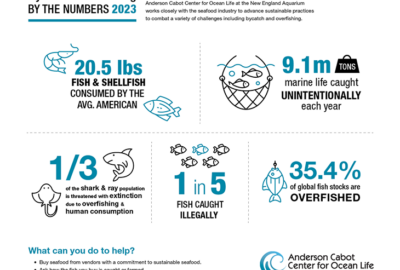The Coolest Things We Saw—and Tasted—in Responsible Seafood at SENA 2025
The New England Aquarium incorporates trends from North America’s largest seafood expo into ocean conservation efforts.
By New England Aquarium on Tuesday, June 24, 2025

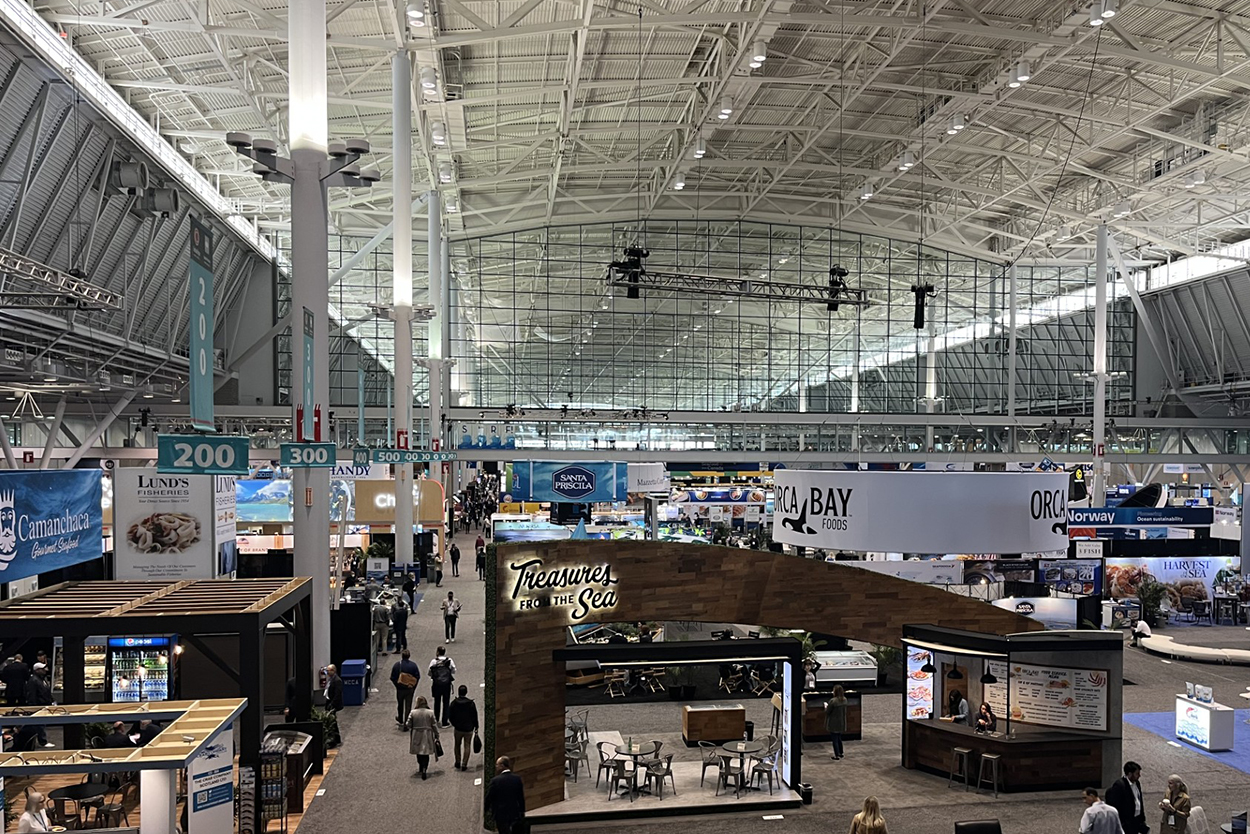
The New England Aquarium supports a blue economy that can simultaneously benefit the seafood industry, consumers, and marine life. We work with a range of organizations to make seafood more environmentally responsible, including supporting the creation and use of novel fishing methods and technologies that reduce bycatch (the unwanted catch of marine life along with the targeted species), encouraging the development of responsible aquaculture (farming aquatic life), and strengthening seafood certification programs.
Every March, thousands of seafood buyers, suppliers, and conservation organizations (like the Aquarium) come together at the Seafood Expo North America (SENA), North America’s largest seafood expo, held in the Seaport’s Boston Convention and Exhibition Center.
The team from the BalanceBlue Lab, a science and innovation hub that utilizes cutting-edge research and market-based solutions to support responsible ocean use, in our Anderson Cabot Center for Ocean Life attended SENA in 2025. There, we networked with collaborators from all over the world, attended panels—and scoured the main floor’s booths, demonstrations, and product samples to find the newest seafood trends (and treats) that could inform future conservation conversations and initiatives.
Here are some of the coolest things we saw in responsible seafood at SENA this year!
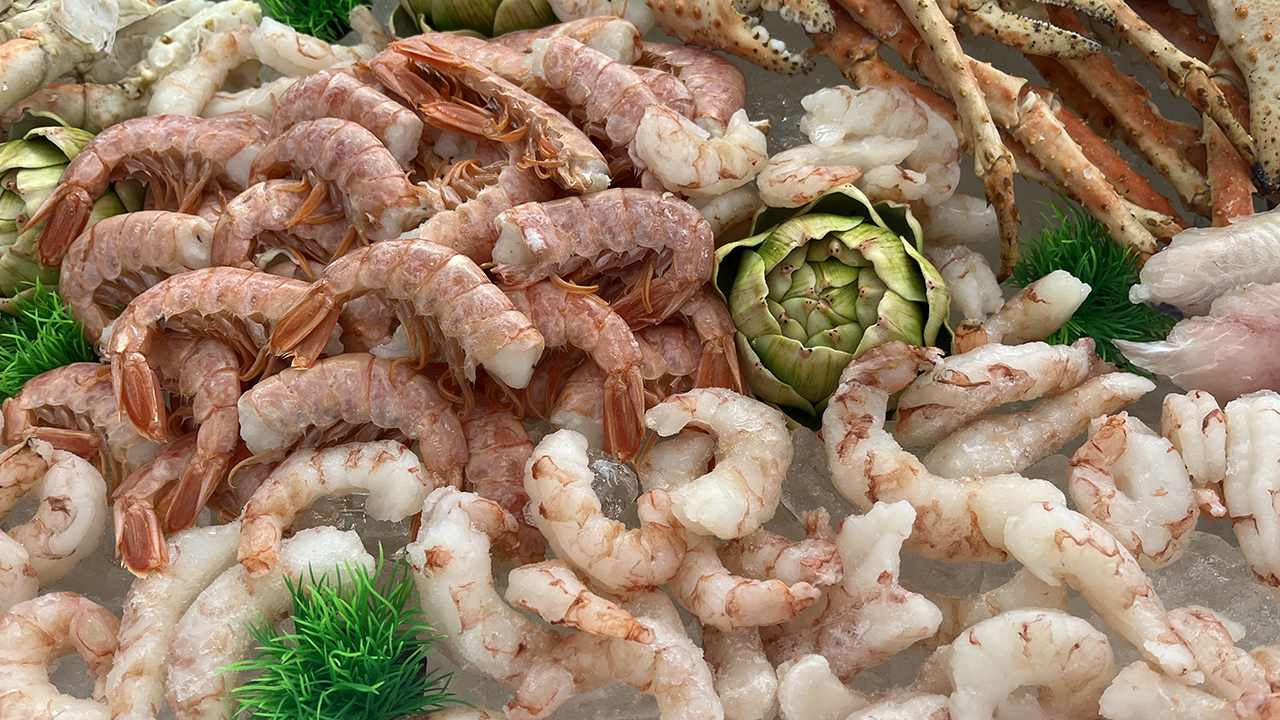
Caviar alternatives
Caviar, a delicacy of salt-cured fish eggs, has long been associated with luxury and fine dining. Unfortunately, the high value of these fish eggs incentivizes illegal fishing practices, which can be particularly impactful on wild sturgeon populations, many of which are critically endangered. This includes the most famous source of caviar: beluga sturgeon from the Caspian Sea.
“We are trying to find something that meets our environmental benchmarks but is also a luxury item,” said Lena Weiss, a program manager at the BalanceBlue Lab.
The team was encouraged to see some farmed sturgeon caviar options, which tend to be a better source as they use domesticated sturgeon rather than sourcing from wild populations, and plant-based caviar alternatives at SENA this year.
You may also find caviar from non-sturgeon species, both farmed and wild, such as lumpfish, salmon, and trout in the seafood market. These sources may also face environmental challenges but not to the same degree as wild-caught sturgeon caviar.
Delicious, invasive species
A major conservation-market opportunity can occur when there is market demand for a wild invasive species. When this happens, fishing can help control invasive populations, while fulfilling demand from grocery stores, restaurants, and other retailers.
Luckily, some invasive species found in the US are truly delicious. For instance, blue catfish, a species that has negatively impacted the ecosystem of Chesapeake Bay in Maryland since it was introduced to the area (for recreational fishing purposes) in the 1970s, was featured at SENA again this year. So were invasive species of green crab, which one company is using to make a broth that our team sampled—and loved—and earned them a nomination for a Seafood Innovation Award. Another Boston-based company uses green crabs to make dog treats.
“I’m big into finding uses for invasive species,” Lena said. “So I really appreciated that.”
BlueSwell alumni
It is a different kind of treat to see alumni of BlueSwell, an incubator program for early-stage bluetech ventures that the Aquarium co-founded with SeaAhead, Inc., at SENA.
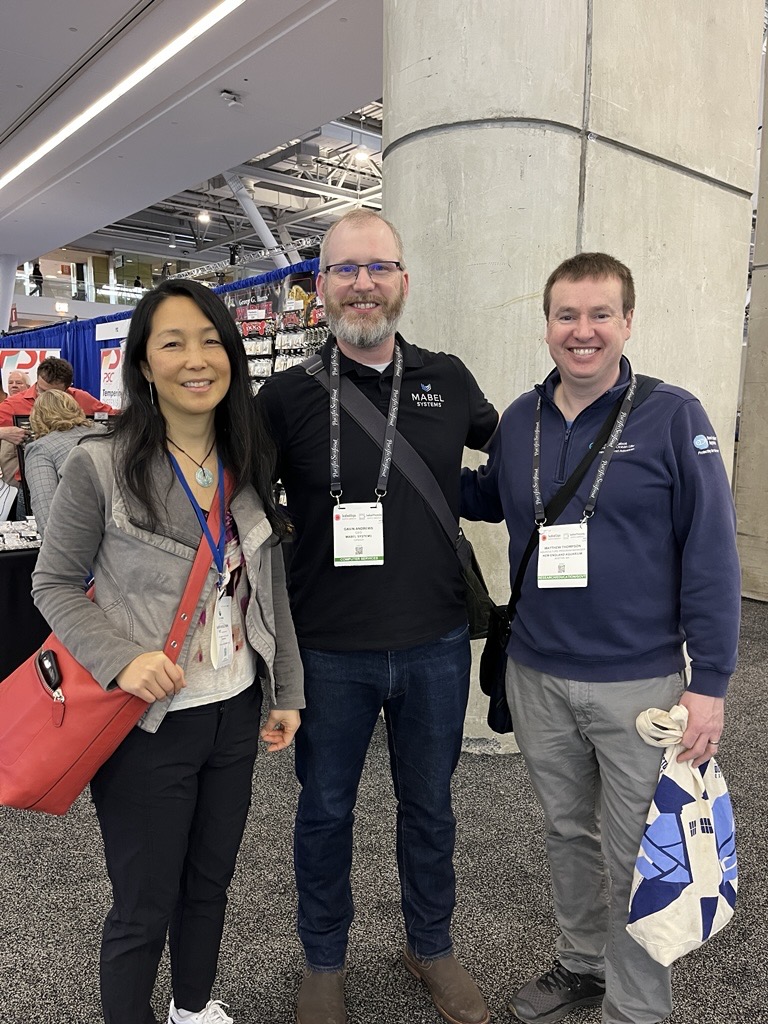
This year, there was a booth for Mabel Systems, a BlueSwell alum and sensor provider that enhances seafood traceability and quality by helping companies monitor operations at different stages. This improves transparency and efficiency for a range of seafood products, leading to less product waste.
“Seafood traceability really decreases the likelihood that you’re eating an illegally caught fish,” Lena explained. “And an illegally caught fish is much more likely to be from an overfished species or be associated with human rights abuses.”
Seaweed
Seaweed has the potential to be a relatively low-environmental impact source of seafood, however, in the U.S., domestically farmed seaweed is still an emerging market. SENA provided an opportunity for companies to share innovative new seaweed products (like seaweed salads, snack foods, and others) with industry and consumers, as companies seek ways to boost demand and therefore production of seaweed.
There are many ways you can support BalanceBlue Lab’s efforts to make seafood more environmentally responsible by engaging with the Aquarium, including planning a visit! Stop by our Blue Planet Action Center exhibit to learn more about the Aquarium’s conservation efforts.

